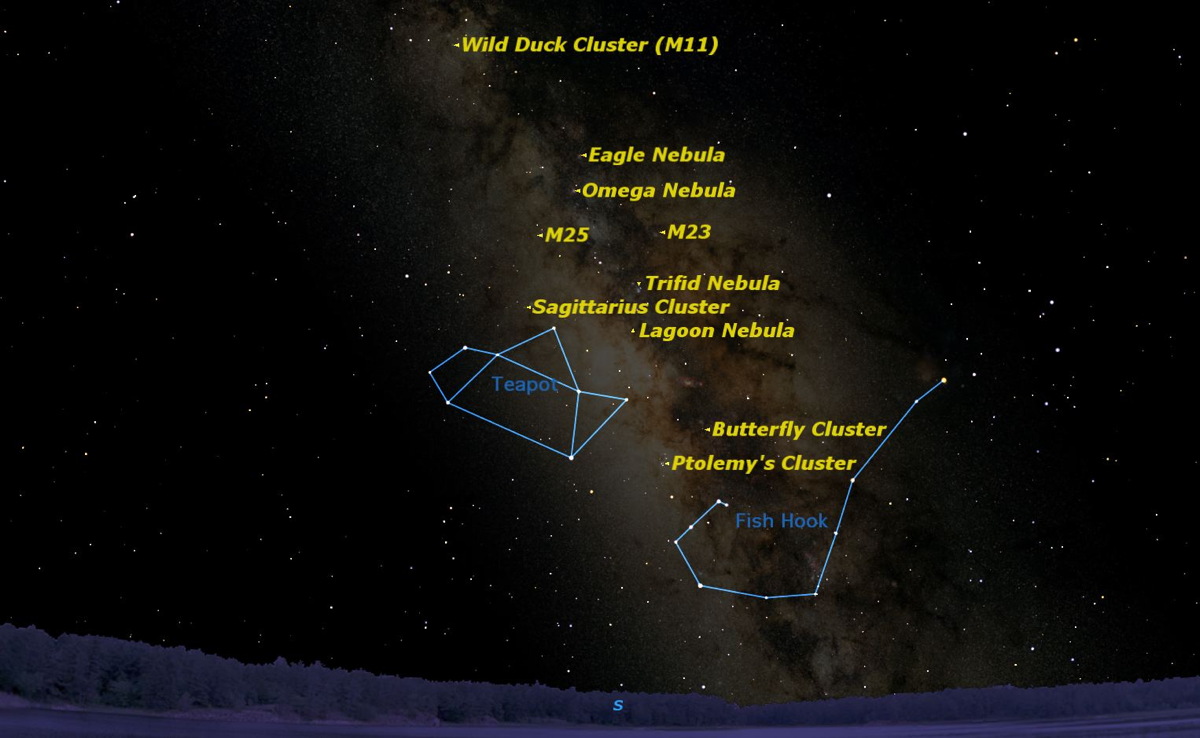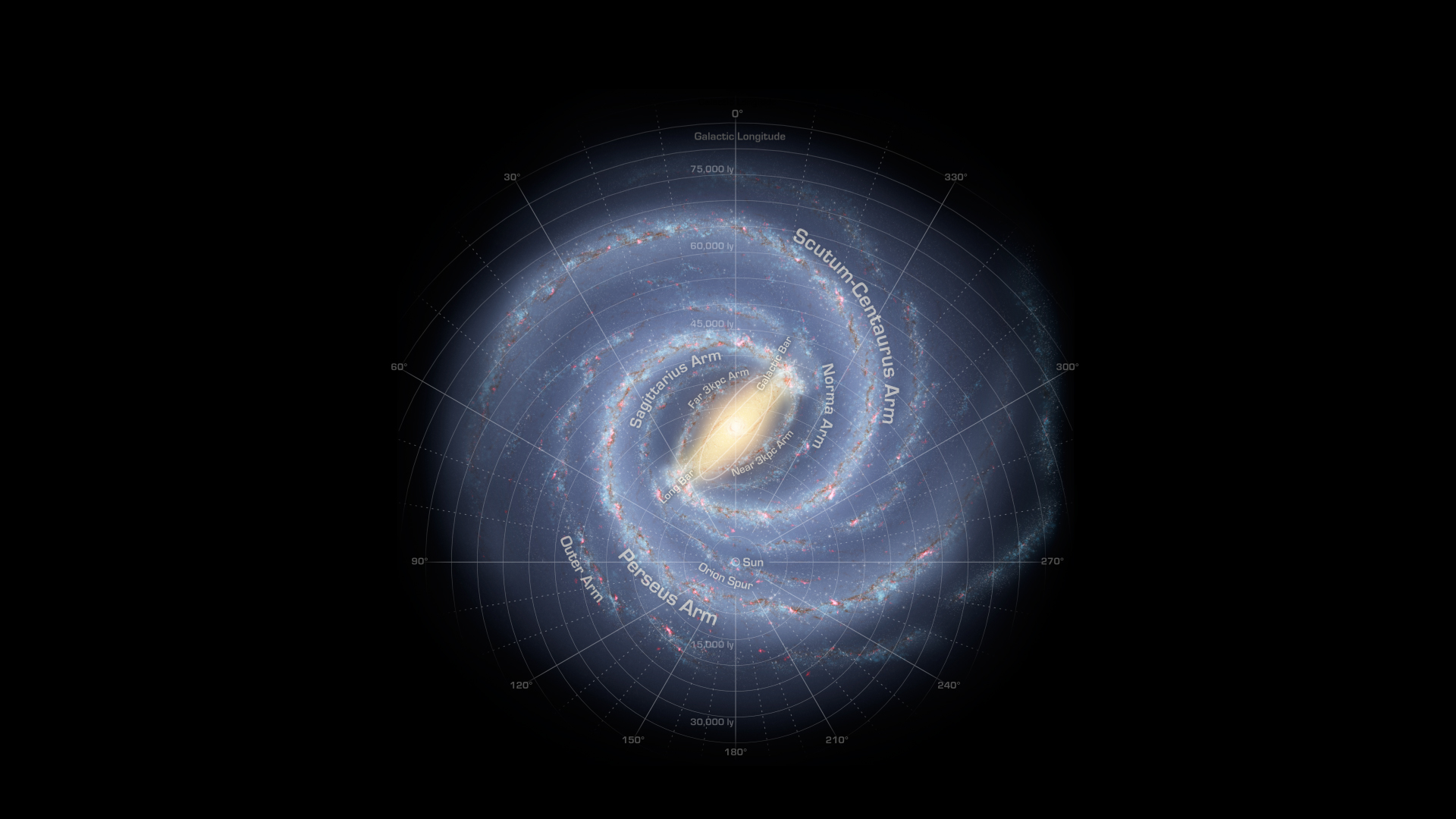Summer Skywatching: See the Clouds of the Milky Way

One of the greatest pleasures for summer stargazers is viewing the splendor of the Milky Way.
Despite the fact that we live in this vast island of billions of stars, most inhabitants of Earth have never seen the clouds of our Milky Way. The illuminated dust of the galaxy was a commonplace sight throughout most of human history, but the sight has been lost to the last few generations because of our desire to light up the night with artificial illumination.
The Milky Way is still there, but you need to make a special effort to see it. Interested observers need to find a location far from modern cities where, on a dark moonless night, the faint glow of our galaxy fills much of the night sky. Take 15 or 20 minutes to let your eyes become fully adapted to the dark, and then look south. [See amazing photos of the Milky Way]
At this time of year in the early evening, the core of the Milky Way galaxy looms just above the southern horizon. The actual core of our galaxy is blocked from our view by countless stars and clouds of gas and dust, but the overall glow shines through.
Because we are immersed in the Milky Way, its stars are all around us. In fact every star we see with the naked eye is within the Milky Way. But because we live on the outer reaches of its disk, the overall glow of the Milky Way forms a broad band all across the sky. Looking south, the midline of our galaxy is canted over about 65 degrees to the left, rising from the southern horizon to a point about two-thirds of the way to the zenith in the east.
The height of the eastern arch of the Milky Way is marked by the three bright stars of the “Summer Triangle”: Vega, Deneb, and Altair.
I particularly like to look at the Milky Way with low powered binoculars. I prefer the 7x50 or 10x50 sizes for portability and wide fields of view. I start at the “teapot” formed by the bright stars of Sagittarius, and slowly sweep upwards.
Get the Space.com Newsletter
Breaking space news, the latest updates on rocket launches, skywatching events and more!
Just above the "spout" of the teapot are a couple of puffs of steam, actually two of the brightest nebulas in the sky, the Lagoon and Trifid nebulas. You’ve probably seen many colorful pictures of these, but our eyes can’t pick up the faint colors of the night sky, so they appear to us as faint white clouds.
Further above the “spout” are two more nebulas, the Eagle and the Omega. This last is my favorite, looking in a telescope like the Greek letter omega or a swan serenely swimming through the night sky; its alternate name is the Swan nebula.

All four of these nebulas are huge clouds of hydrogen gas in which new stars are being born. After the stars form, these newborn stars form what we call open clusters or galactic clusters. Many of these new star clusters are found in this part of the sky, such as the Wild Duck Cluster in the tiny but rich constellation of Scutum.
Just below the Eagle and Swan nebulas is an unusual object, the Sagittarius Star Cloud. The famous 18th century hunter of nebulae, Charles Messier, was fooled into thinking this was a gigantic star cluster, and gave it the number 24 in his catalog. Recently we have discovered that, rather than being a real object, this is actually a hole in the nearby arm of the Milky Way, a window through we see the huge numbers of stars inhabiting the next spiral arm inward towards the center of our galaxy, the Norma Arm.
The Milky Way is an astronomical treat, which can be enjoyed with the naked eye, with binoculars, or with telescopes of any size. It’s worth the trip out of town to see it.
Editor's Note: If you have an amazing night sky photo you'd like to share for a possible story or image gallery, please contact managing editor Tariq Malik at spacephotos@space.com.
This article was provided to Space.com by Simulation Curriculum, the leader in space science curriculum solutions and the makers of Starry Night and SkySafari. Follow Starry Night on Twitter @StarryNightEdu. Follow us @Spacedotcom, Facebook and Google+. Original article on Space.com.
Join our Space Forums to keep talking space on the latest missions, night sky and more! And if you have a news tip, correction or comment, let us know at: community@space.com.

Geoff Gaherty was Space.com's Night Sky columnist and in partnership with Starry Night software and a dedicated amateur astronomer who sought to share the wonders of the night sky with the world. Based in Canada, Geoff studied mathematics and physics at McGill University and earned a Ph.D. in anthropology from the University of Toronto, all while pursuing a passion for the night sky and serving as an astronomy communicator. He credited a partial solar eclipse observed in 1946 (at age 5) and his 1957 sighting of the Comet Arend-Roland as a teenager for sparking his interest in amateur astronomy. In 2008, Geoff won the Chant Medal from the Royal Astronomical Society of Canada, an award given to a Canadian amateur astronomer in recognition of their lifetime achievements. Sadly, Geoff passed away July 7, 2016 due to complications from a kidney transplant, but his legacy continues at Starry Night.










